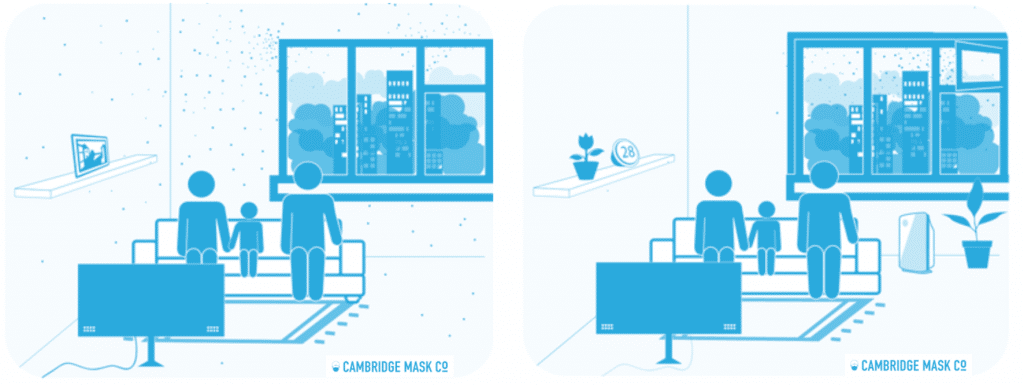Indoor Air Pollution
Indoor Air Pollution
The smog that falls over most Chinese cities and the occasional red alerts issued by authorities leave no question about the need to protect yourself against air pollution while outdoors. However, studies show that people are as much in danger of exposure to pollution indoors as they are outdoors.
Jones Lang LaSalle (JLS) surveyed 160 office buildings in Beijing in the 2nd half of 2015 and their findings, which were published in a white paper titled ‘Every breath we take: transforming the health of China’s office space’, showed that of the offices surveyed, 90% had high levels of PM2.5, while a quarter of the buildings had worse air quality indoors than outdoors. JLS found that impairing cognitive functions, indoor air pollution not only affected the health of employees in these offices, but had an effect on daily business operations as well as company growth.
Common indoor pollutants
Volatile Organic Compounds (VOCs) such as formaldehyde, are high in most indoor spaces, due to the use of particle board in buildings and furnishings. Formaldehyde was named a carcinogen in a report released by the US EPA in June of 2010. Sensitive individuals and children can react to small concentrations of formaldehyde and exhibit symptoms such as dry and sore throat, headaches, nausea, shortness of breath, dizziness, nosebleeds and eye irritation.
Other pollution sources such as household cleaning products and cooking gas, all contribute to emission of VOCs indoors. Add this to mould, mites, dander, and outdoor pollutants that filter indoors, and the air quality can get much worse than outdoor air quality.
What to do?
Based on the above information, we've created a guide on how to deal with common pollutants and make your home and office a healthy space.
1. Assess

Laser Egg is compact, sleek and provides accurate indoor and outdoor PM2.5 readings. We recommend using Laser Egg in conjunction with a good quality air purifier to gauge if there are leaks that need your attention.
2. Seal

Simply closing windows on polluted days will not solve the problem of indoor air pollution. PM2.5 is about 100 times smaller than a human hair and will get indoors even when you shut your windows. 3M provides a huge range of sealants for windows to prevent this. Furthermore, as pollution tends to be worse in the winter, sealing your windows will also insulate your home, making it more energy efficient.
3. Air
This feels counterintuitive, but due to VOCs produced by household appliances and cleaning products, you should air the rooms at least once a day to get rid of 'stale' air. On very bad days, we recommend wearing a mask whilst you air the room with the air purifier running on full.
4. Purify

Air purifiers are getting cheaper and better with more and more quality manufacturers entering the market. However, being technologically complex, the quality does depend on the price you pay. Also, many air purifiers offer solutions for allergies, but not necessarily pollution. Please make sure you do your research before purchasing an air purifier. As a rule of thumb, for air to be clean, the changes per hour (or the number of times air circulates through the air filters) should be 5. If this is not the case, get additional units or a larger unit suitable for large rooms. Last but not least, keep air purifiers running on low setting even if not at home.
5. Grow

The following plants are great at filtering out common VOCs as well as particulate pollution: Aloe Vera, Spider Plant, Gerbera Daisy, Snake Plant and English Ivy. These are the plants that are easier to look after than the other recommendations. Oh and NASA recommended it. Seriously look: Interior Landscape Plants for Indoor Air Pollution Abatement.
Stay healthy,

We hope you found the information above helpful! If there's anything you'd like us to write about, please email karina@cambridgemask.com. We personally reply to all emails.
Bonus
Pollution Puzzle: Spot the difference
To win a Cambridge Mask respirator
- Spot and mark 10 differences
- Follow us on your favourite Social Media platform such as Facebook, Twitter or Wechat (scan QR code below).
- Email Karina@cambridgemask.com the differences and your mask preference!













